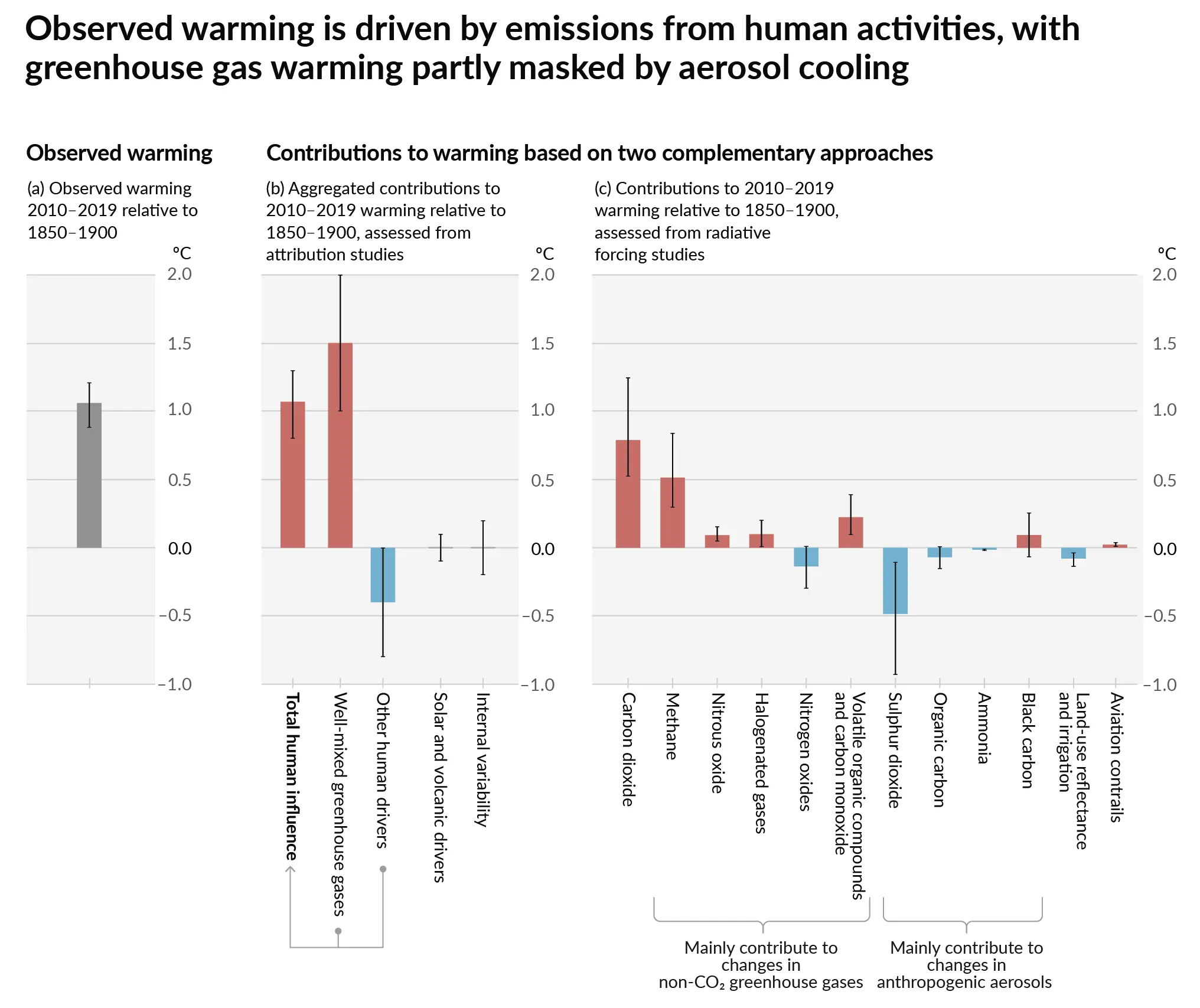we’d expect to see a winter like this about once every 7.5 million years.
Unlike 1 in 3000 year floods, we now have 1 in 7,500,000 Winters.
cross-posted from: https://slrpnk.net/post/906853
The article says this:
“The consensus statement at the moment would be that this is largely anthropogenic forces that have caused the ocean to warm, for the atmosphere to be highly disturbed and to affect the sea ice,” she said.
Which means this in terms of gases added to the atmosphere:
The key thing about these anthropgenic gases, is that the biggest contribution for CO2, the biggest one, is largely from burning fossil fuels:
Of the total anthropogenic CO2 emissions, the combustion of fossil fuels was responsible for about 64% ± 15%, growing to an 86% ± 14% contribution over the past 10 years. The remainder resulted from land-use change. ___
A bit of maths for those who aren’t aware. 5 sigma means 5 standard deviations away from the norm. It means the chance of an event like this happening and climate change not being responsible for it is 1 in 3.5 million. It’s the same level of confidence physicists used to confirm that they have indeed discovered the Higgs Boson, among other things.
Oil executives: So you’re telling me there’s a chance
The truth is that it’s probably even worse that this looks.
If this were the only low-probability datapoint, then the fossil fuel fossils would actually have a point. 5 sigma is worth a huge amount when there’s one very specific thing you’re looking for, but with climate we’re not only looking at one thing, we’re looking at average temperature, highest temperature, highest winter temperature, number of cyclones, severity of cyclones, extent of rainfall, extent of droughts, and many, many more specific datapoints. Even those datapoints I mentioned there can be measured in a bunch of subtly different ways. So any one of those reaching a rare event on its own is not necessarily as unlikely as one specific event taking place.
With 10,000 possible datapoints, the probability at least one reaches 5 sigma is only 1 in 350.
Basically, the probability of A or B or C is much higher than the probability of A.
But then there’s the fact that we’re seeing low-probability events not just in any one thing, but in multiple ones. This article is about winter Antarctic ice levels. But this year we’ve also had record high temperatures multiple successive days in a row, in addition to all the other stuff. And when that happens, the odds become even worse.
With just three datapoints, the probability that one is 5 sigma and 2 others are 3 sigma is 1 in 250 billion. (Remembering that this 5 sigma event on its own was 1 in 3.5 million.) Add more and more events on, as we’re seeing more and more low-probability events take place, and the odds start blowing out beyond all possible recognition.
Because the probability of A and B and C is much lower than the probability of A.
It sounds like a writing prompt for a horrific unsustainable condition in an SCP containment scenario.
You know it’s bad when it’s called “five sigma event”
Yeah, 5 sigma is the standard most often used in fields like particle physics. Other fields are usually happy with probabilities much higher than that.

It’s getting hot in here.
The Sigma is back?








